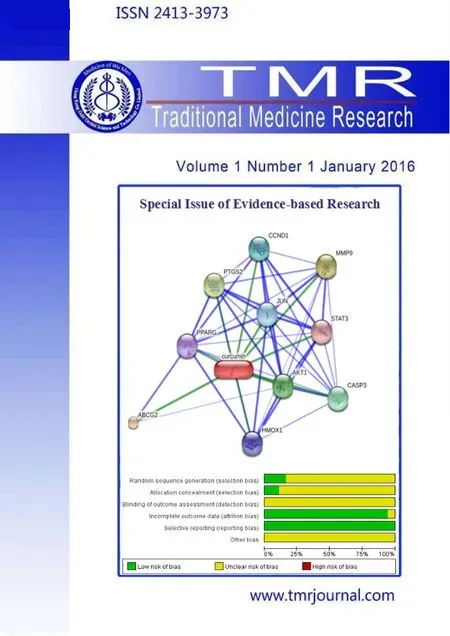Similarities and differences of doctor-patient co-operated evidence-based medical record of treating digestive system diseases with integrative medicine compared with traditional medical records
2016-09-14BoLiWenHongShaoYanDaLiYingPanZhaoQingNaLiZhaoYangHongCaiShang
Bo Li,Wen-Hong Shao,Yan-Da Li,Ying-Pan Zhao,Qing-Na Li,Zhao Yang,Hong-Cai Shang
1Xiyuan Hospital,China Academy of Chinese Medical Sciences Drug Clinical Trial Institution;Beijing,China.2 China Academy of Chinese Medical Sciences Institute of Clinical Pharmacology,Beijing,China.3Beijing United Family Hospital and Clinics(BJU),Beijing,China.4Key Laboratory of Chinese Internal Medicine of Ministry of Education and Beijing,Dongzhimen Hospital,Beijing,China.
Introduction
Clinical Therapeutic Evaluation is a key issue for the development of medical science,which is in the range of concern over life quality to the research of evaluated tables of Patient Report Outcome(PRO),and more medical researchers pay attention to the patients’feeling.In addition,the main indicators of therapeutic evaluation also tend to be used for the patients’feeling.The way how to evaluate the efficiency of intervening measures is combing doctor’s evaluation and patient’s evaluation,which come out soon[1-6].At the same time,based on the current study,clinical effects can be evaluated more comparatively if the patients’values is paid attention to.However,if the researchers only focus on the patients’values,over-generalization may be resulted. Clinical therapeutic evaluation system is built by integrating evaluations of both doctors and patients,which is possibly to contribute to evaluating therapy objectively and comprehensively.It is a challenge whether the comprehensive therapeutic evaluation can be established through evaluating by both doctors and patients.
The thought and philosophy of evidence-based medicine is leading the current world medical trend,which include three indispensable factors such as doctors’experience,the best examination measures at present and the patients’value orientation.What doctors should consider is how to demonstrate the patients’values in diagnosis and treatment.Doctor’s record should be oriented in the clinical records because of their objective angle,and patients’feeling should also be caught more attention to[7-12].
In 2001,Doctor Rita Charon in Columbia University initially put forward the concept of “Narrative Medicine”,which is a medical practice relevant to the patients’narrative ability and the practices related to doctors,patients,colleagues and the understanding of highly complex public narrative context.In short,it practices doctor show to witness the patients’sufferings,and lead patents to describe the diseases completely by themselves.In this aspect,it farther involves the idea of“respect the patients’values”of evidence-based medicine,which equips clinical medicine with more humanistic solicitude and flexibility,and it also shows the features of reality and comprehension in therapeutic evaluation[13-15].
The academician Wang Yongyan points out in Strengthen The Idea of Medical Humanity,Embrace The New Medical Reform and Study Evidence-based Medicine that neither“Narrative Medicine nor Evidence-based Medicine can be overlooked,and the two jointly promote the development of medicine and humanity”; currently “the main practical way of narrative medicine is the writing pattern of parallel medical record in medical activities,which provides medical humanity with substantial clinical procedures and evaluation indicators”.In this process,the patients’pains should be recorded in non-medical terms.Either doctor’s record or patient’s record should reveal truly the clinical process in two dimensions,so empathy can be created between the doctors and patients,which can be used to serve clinical diagnosis and treatment as well as therapeutic evaluation.
Doctor-patient cooperated record is aimed to change the conventional model of doctor-oriented medical record and set up a certain form so as to make a medical document involved in patient’s feeling,which respect the patients’values orientation,and recorded by doctors and patients.The records of diseases on spleen and stomach based on doctor-patient cooperation,are oriented by integrated medicine,is established for the commonly seen diseases in digestive internal medicine.This study is to discuss the record of its disease,and the hypothesis of doctor-patient cooperation,as a new way of evaluation,is capable of reflecting the actual clinic effects more comprehensively than conventional records by doctors or PRO’s evaluated tables by patients.
Objects
In the case of refux esophagitis of digestive disease and gastric precancerous lesions,make out the similarities and differences between doctor-patient cooperated records and patients and previous records through clinical experiments;evaluate the advantages and disadvantages of medical records cooperated by doctors and patients.
Methods
Retrieve the relevant information by the key English words like Pubmed,Embase,CBMdisc,CNKI,as well as the key words and subject headings in Chinese such as Narrative Medicine and Doctor-patient cooperation from medical databases;Consult experts of internal digestive of integrated medicine as well as evidence-based medicine;Draft the forms of doctor-patient cooperated record from the prospective of clinical therapeutic evaluation;merge with patient’s record of narrative medicine.What these procedures is to formulate doctor-patient cooperated record,and then have clinical survey.During the process,make out the differences between doctor-patient cooperated record and conventional record made by doctors only.
Results
This study plan has been certificated by Xi yuan Hospital’s Ethics Committee of China Academy of Chinese Medical Science,and the Grant No.is 2014XL083-2 It has been also registered in Chinese Clinical Trial Center of WHO,and the Registration No.is ChiCTR-OOC-15006023,clinical trials are under way,and by August 15th,2015,79 patients have participated in the study and 52 patients have finished their own tasks.
The clinical diagnosis of doctor-patient cooperated records
The participants must have the pathological diagnosis report from Grade III,Class A hospital.In terms of diagnosis,there is no difference between doctor-patient cooperated record and common medical record.
The symptom tables of doctor-patient cooperated record
The following is cooperated by doctor and patient,which is different from the previous research record and is a core of co-evaluation and co-decision-making.After retrieving English words like Pubmed,CBMdisc,CNKI as well as Wanfang in Chinese and etc.from English and Chinese medical databases,there are no relevant research cases which have been published previously,and the writer have established tables from many clinical trials by taking part in and managing several of digestive apartments in person[17-18].
Physician’s record
1、chief complain:
2、history of present illness:See the following tables
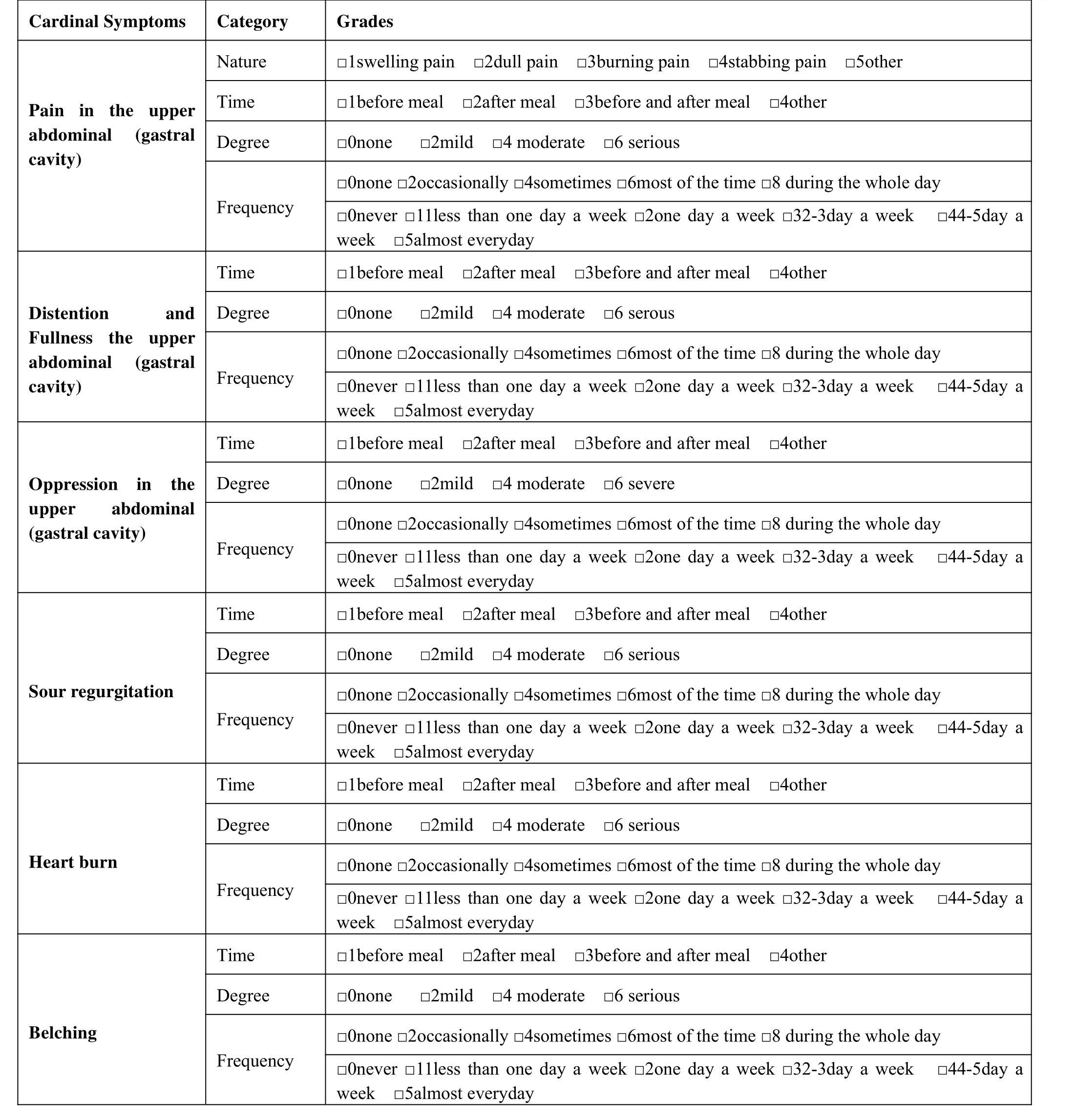
Table1 Clinical symptoms observation:Cardinal Symptoms.
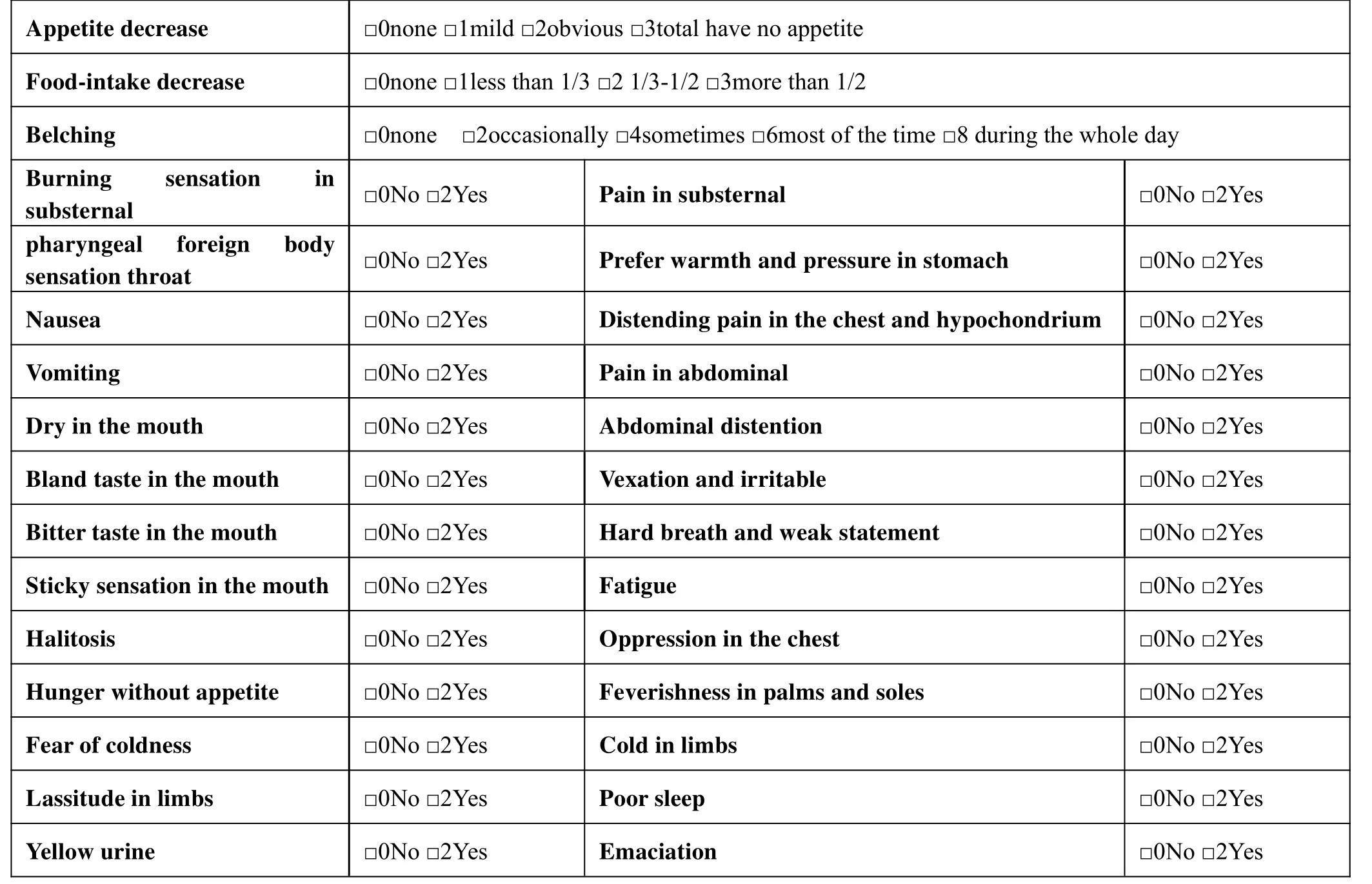
Table2 Clinical symptoms observation:Minor symptoms.

Table3 Clinical symptoms observation:Inducing and aggravating factors of main symptoms.

Table 4 Clinical symptoms observation:Symptoms for differentiation reference.


Table5 Patient’s record.
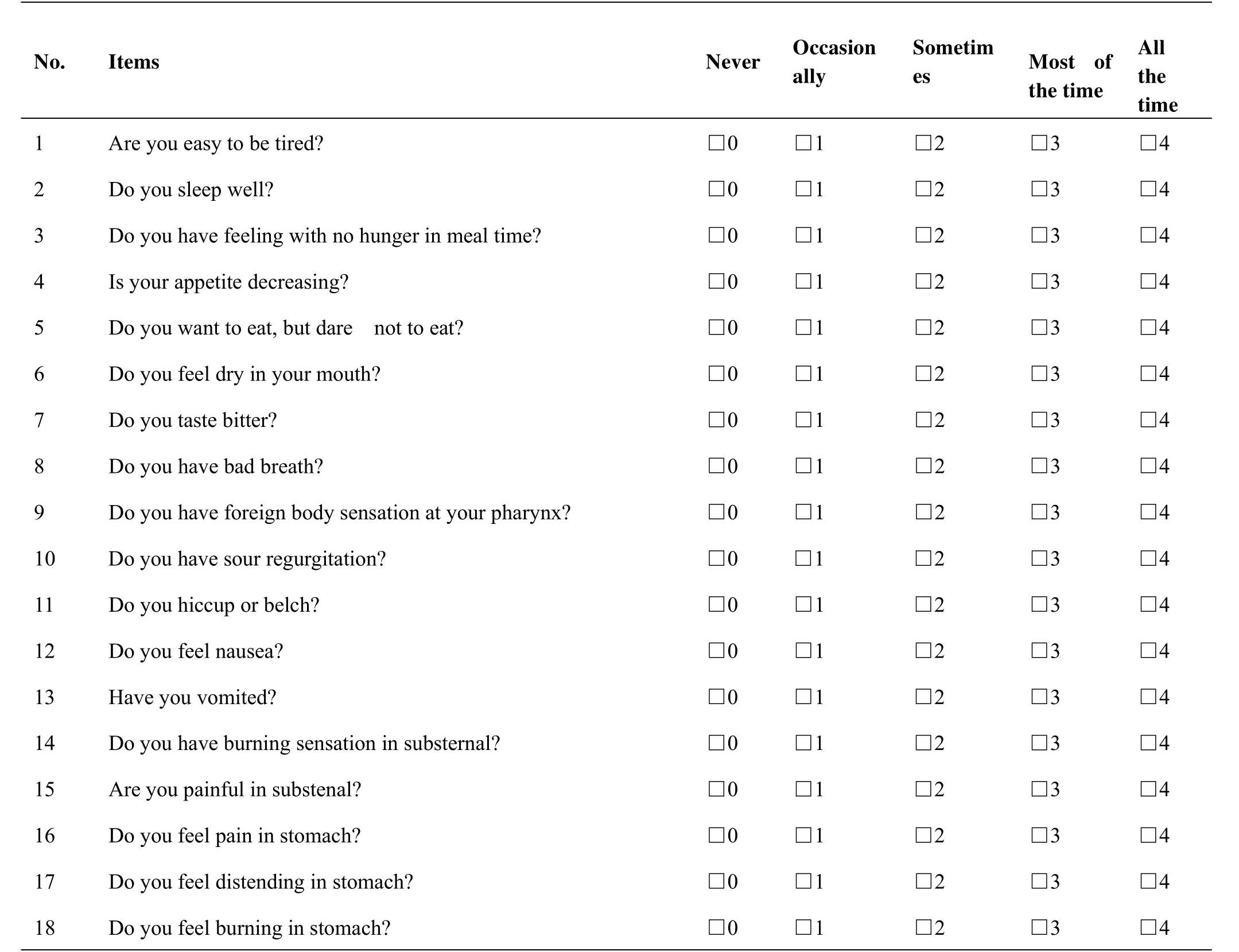
Table6 PRO’s Evaluated Table of Gastroenteropathy.

19 Do you feel pain in abdomen? □0 □1 □2 □3 □4 20 Do you feel distending in abdomen? □0 □1 □2 □3 □4 21 How is your pain in substernal? □0 □1 □2 □3 □4 22 How is your burning sensation in substernal? □0 □1 □2 □3 □4 23 How is your pain in stomach? □0 □1 □2 □3 □4 24 How isyour feeing of distending in stomach? □0 □1 □2 □3 □4 25 How is your pain in abdomen? □0 □1 □2 □3 □4 26 How is your feeling of distending in abdomen? □0 □1 □2 □3 □4 27 Do you havediarrhea? □0 □1 □2 □3 □4 28 Do you have constipation?(defecate more than every 3 days,or havedry and hard stool or havedifficulty in defecating) □0 □1 □2 □3 □4 29 Do you still want to defecate after having done it? □0 □1 □2 □3 □4 30 Do you feel urgent to defecate(Do you rush to thewash room)? □0 □1 □2 □3 □4 31 Have you lost weight in recent 2 months? □0 □1 □2 □3 □4 32 Is your mood affected easily? □0 □1 □2 □3 □4 33 Areyou in anxiety or tension? □0 □1 □2 □3 □4 34 Areyou worried about your disease? □0 □1 □2 □3 □4 35 Does your health condition limit your social activities such as shopping or visiting relatives or friends? □0 □1 □2 □3 □4 36 Dose the disease affect your status or role in family or work? □0 □1 □2 □3 □4 37 Patient’ssignature Date 38 Physician’s signature Date
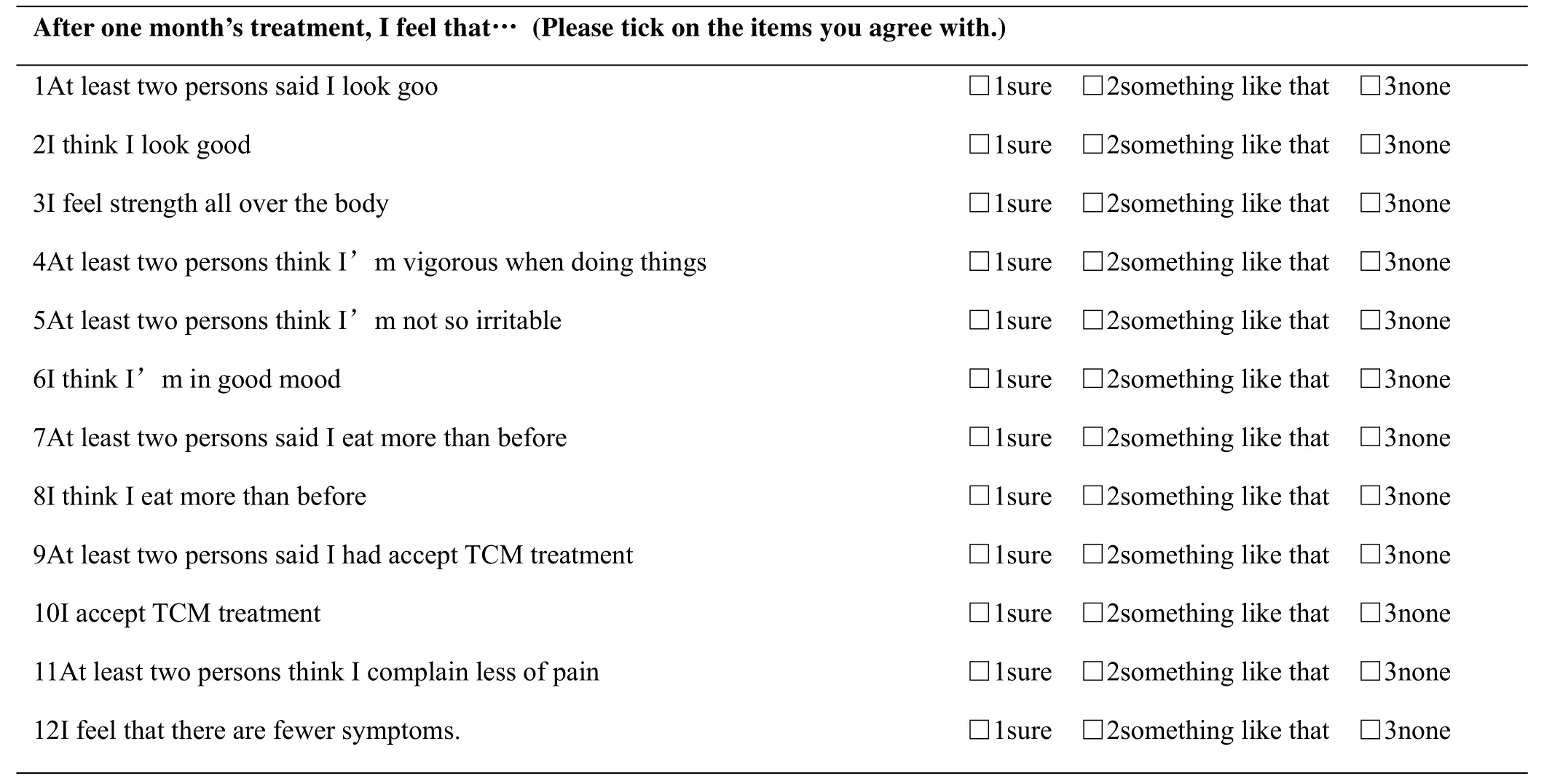
Table7 The comprehensive evaluation one month after cooperating.
Discussion
The total of 61 papers about narrative medicine have been found on the Internet by retrieving English words like Pubmed,Embase,CBMdisc and CNKI,but there are no reports on“Doctor-patient cooperated record”at home and abroad.This is first to expound the establishment of doctor-patient cooperated record on the base of narrative medicine and the framework of the relevant therapeutic evaluations.
There are two parts in doctor-patient cooperated record,one is from doctor,and the other is from patent which is not found in the conventional records.The two parts are integrated together and proved each other,which can better reflect the current state of the diseases.The doctor’s record includes four factors such as cardinal symptoms,minor symptoms,inducing factors and differentiation reference(excrement,tongue and pulse),which are the ways for doctors to diagnose,and doctors follow the medical principle of strictness and objective.This part includes all symptoms of digestive diseases and is classified according to medical terms,which is what doctors inquire of the patients and can reveal the doctor’s evaluation.The tables filled in by patients have been revised based on PRO’s evaluated table through many clinical trials,and the digestive symptoms that patients can feel have been chosen as much as possible and classified into different items.Furthermore,language is easy to understand and the choices can be operated easily,and the items are the symptoms and sufferings that patients want to tell doctors.
The tables of symptoms such as epigastric pain,acid reflex,heart burn are designed to exchange confirmation by doctors and patients,and the method make the evaluation more representative and close to clinic facts.The results can be evaluated precisely because the symptoms and symptom degrees are confirmed by doctors and patients respectively.
The study are also involved the patients’satisfactions,values as well as diagnosis and treatment,which consists with patients’assessments and free descriptions and can further verify patients’judgments.Subjective description is possible to deviate from and be different from facts and discrepancies are easier to occur than the objective records.Doctors get the information about the patients’value orientation in order to know the patients’thinking,and then educate patients from the respective of sociology and psychology.The patients with high expectation can make doctors and patients in trouble because of the non-objective diagnosis and treatment.Doctors and patients are faced with the symptoms through communicating each other on account of trust and work together to ascertain the diseases,which is beneficial to produce the most effective in diagnosis and treatment.Full communication between doctors and patients show the meaning of evidence-based medicine,which respect patients’value orientation,and the humanity of narrative medicine.
The questionnaire after treatment is also an important item in doctor-patient cooperated record,which displays patients’entire feelings and has a preliminary quantification.It is divided into six dimensions and is used to evaluate a month’s treatments as a whole.Two questions in a dimension can confirm each other.Referring to the doctor and patient’evaluation above,and after examining validity and reliability,we will adopt weighting way to calculate effective quantity by putting the three items together,and then get the comprehensive mark for doctor-patient cooperation and try to take it as comprehensive evaluation for patient’s effects,which is different from the conventional medical record,but it is easily overlooked because what doctor and patient desires are not consistent.However, this questionnaire tempts to unify doctors’and patients’feelings and balance the evaluation of diagnosis and treatment. .
We think that it is possible to contribute to an innovation in a new model of clinical therapeutic evaluation by researching doctor-patient cooperated record,which far more focuses on patients’feeling than the conventional medical record.Many items in therapeutic evaluation are consistent and make patients enjoy their life experience and their cognition without having the feeling of “coldness”in the medical world any more.And the patients can raise satisfaction by these items and depend on them increasingly so that it improves the ways of diagnosis and treatment as well as effects.This study is to demonstrate the whole therapeutic effects with multi-targets and multi-levels by making out the differences between doctor-patient cooperated record and the conventional medial record,coordinating doctors with patients and balancing the objective and subjective.
Competing interests
The authors declare that they have no competing interests.
Acknowledgment
Supported by the National Natural Science Foundation of China(No.81303151),Beijing Nova Program(No.xxjh2015A093 and No.Z1511000003150125)and Projects in the National Science&Technology Pillar Program during the Twelfth Five-year Plan Period(No.2012BAI41B07).
1.Atkins D,Best D,Briss PA,et al.Grading Quality Of Evidence And Strength Of Recommendations.BMJ,2004,328(7454):1490.
2.Schunemann H,Fretheim A,Oxman AD.Improving The Use Of Research Evidence In Guideline Development:10.Integrating Values and Consumer Involvement.Health Res Policy Syst,2006,4:22.
3.Fletcher SW,Spitzer WO.Approach Of The Canadian Task Force To The Periodic Health Examination.Ann Intern Med,1980,92(2 Pt 1):253-254.
4.Glasziou P,Chalmers I,Rawlins M,et al.When Are Randomized Trials Unnecessary?Picking Signal From Noise.BMJ,2007,334(7589):349-351.
5.Thompson DC,Rivara FP,Thompson R.Helmets For Preventing Head And Facial Injuries In Bicyclists.Cochrane Database,Syst Rev,2000;(2):CD001855.
6.Oxman AD,Guyatt GH.Guidelines For Reading Literature Reviews.CMAJ,1988,138(8):697-703.
7.Cannegieter SC,Rosendaal FR,Briet E.Thromboembolic And Bleeding Complications In Patients With Mechanical Heart Valveprostheses.Circulation,1994,89(2):635-641.
8.Karanicolas PJ,Davies E,Kunz R,et al.The Pylorus:Take It Or Leaveit?Systematic Review And Meta-analysis Of Pylorus-preserving Versus Standard Whipple Pan Creaticoduodenectomy For Pancreatic Orperiampullary cancer.Ann SurgOncol,2007,14(6):1825-1834.
9.[9]Schunemann HJ,Jaeschke R,Cook DJ,et al.An Official ATSS tatement:Grading The Quality Of Evidence And Strength Of Recommendations In ATS Guidelines And Recommendations.Am JRespirCrit Care Med,2006,174(5):605-614.
10.Guyatt G,Cook D,Devereaux PJ,et al.Therapy.In:Guyatt G,RennieD,eds.The Users’Guides To The Medical Literature:A Manual For Evidence-based Clinical Practice.Chicago:AMA Publications,2002.
11.Montori VM,Devereaux PJ,Adhikari NK,et al.Randomized Trials Stopped Early For Benefit:A Systematic Review.JAMA,2005,294(17):2203-2209.
12.Wang Yongyan,Shang Hongcai,Mu Wei Wang Yanping and ect.Strengthen The Theory Of Medical Humanities And Embrace The New Medical Reform And Study Narrative Medicine In Modern Traditional Chinese Clinical,Ⅴo1 22 No 1 Jan:1-4
13.CHARON R.Narrative Medicine:From,Function,And Ethics[J].Annals of Internal Medicine,2001,134(1):83-87
14.CHARON R.Narrative Medicine–A Model For Empathy,Reflection, Profession, And Trust[J]JAMA,2001,286(15):1897-1902.
15.Wang Yifang Clinical Medical Humanities:Problems and Solutions-On The Significance Of Narrative Medicine For Clinical Humanities[J⒈ Medicine and Philosophy,2013,34(9A):.14-18.
16.Liu Fengbin,Wang Weiqiong,Formulate PRO’s Evaluated Table On Stomach Disease And Item Selection[J].The World Science And Technology (Modernization of Traditional Chinese Medicine),2009,(4).
17.Wang P,Tang XD,Liu BY,Zi MJ.Development of a patient-reported outcome instrument for chronic gastrointestinal disease:item selection.JChin Integr Med.2012:10(10):1092-1098.
18.Tang XD,Wang P,Liu BY,Zi MJ.Development and Analysis of a Patient Reported Outcome Instrument for Chronic Gastrointestinal Diseases.Journal of Traditional Chinese Medicine.2008:50(1):27-29.
杂志排行
Traditional Medicine Research的其它文章
- Experimental research of integrative Chinese medicine in multiple sclerosis
- Complete response of hepatocellular carcinoma treated with traditional herbal medicine:A case report
- Massage for migraine:A meta-analysis
- The effect of acupuncture plus drug versus drug alone on patients with mild cognitive impairment:a systematic review
- Effects and safety of acupuncture for DFUs:a systematic review and meta-analysis
- TMR:A new star for the research of traditional medicine
